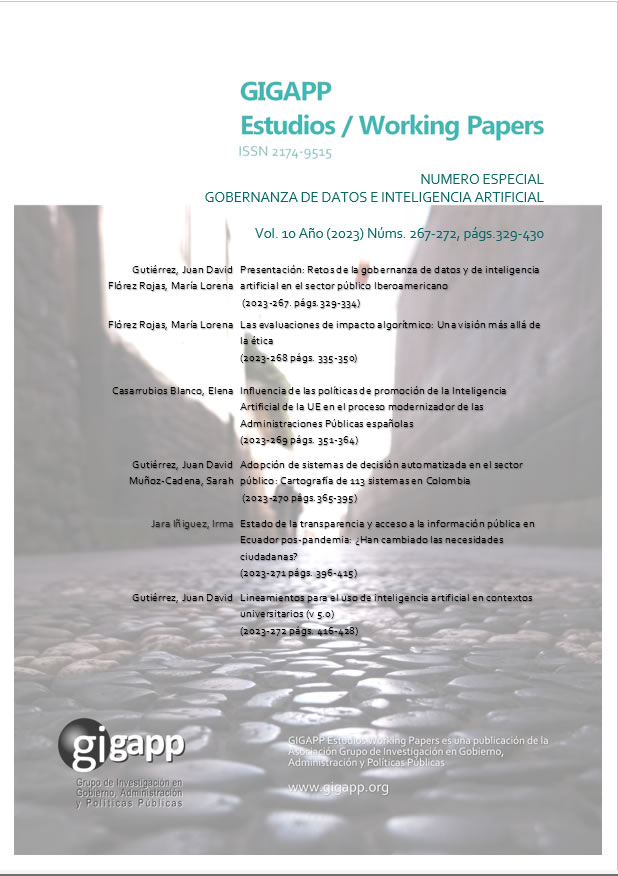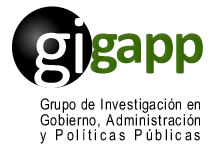Lineamientos para el uso de inteligencia artificial en contextos universitarios
(v 5.0)
Resumen
Este instrumento ofrece una orientación a profesores y estudiantes para que el uso de inteligencia artificial (IA) en contextos universitarios sea informado, transparente, ético, y responsable. Los Lineamientos proponen reglas, principios y ejemplos que son aplicables para las actividades peda-gógicas realizadas dentro y fuera del aula. El texto está precedido de un preámbulo que busca poner en contexto al lector mediante una breve explicación sobre la historia de la formulación y desarrollo de los Lineamientos. El instrumento está dividido en siete secciones: (1) introducción, (2) objetivos, (3) reglas de uso dentro y fuera del aula, (4) justificación de las reglas, (5) otros recursos para profesores/as, (6) apertura a futuros cambios, y (7) cambios respecto de anteriores versiones de los lineamientos. Aunque los lineamientos son pertinentes para el uso de cualquier tipo de IA, sus reglas se enfocan en el uso de chatbots –tales como ChatGPT, Bing, Claude, y Bard, entre otros– que permiten a los estudiantes acceder a los modelos de lenguaje a gran escala. El objetivo de los lineamientos es convertirse en un recurso útil para quienes precisen de un documento fundamentado, comprehensivo, y estandarizado que permita establecer guías de trabajo claras respecto del uso de IA en la universidad.
Descargas
Derechos de autor 2023 Juan David Gutiérrez, Dr. (Autor/a)

Esta obra está bajo licencia internacional Creative Commons Reconocimiento-NoComercial-CompartirIgual 4.0.
Aquellos autores/as que tengan publicaciones con esta revista, aceptan los términos siguientes:
a. Los autores/as conservarán sus derechos de autor y garantizarán a la revista el derecho de primera publicación de su obra, el cuál estará simultáneamente sujeto a la Licencia de reconocimiento de Creative Commons Attribution-NonCommercial-ShareAlike 4.0 International (CC BY-NC-SA 4.0) que permite a terceros compartir la obra siempre que se indique su autor y su primera publicación esta revista.
Con esta licencia de acceso abierto, los lectores (usuarios) pueden:
- Compartir — copiar y redistribuir el material en cualquier medio o formato
- Adaptar — remezclar, transformar y construir a partir del material
Bajo los siguientes términos:
-
Atribución — usarios deberán dar crédito de manera adecuada, brindar un enlace a la licencia, e indicar si se han realizado cambios. Puede hacerlo en cualquier forma razonable, pero no de forma tal que sugiera que usted o su uso tienen el apoyo de la licenciante.
-
NoComercial — usuarios no puede hacer uso del material con propósitos comerciales.
-
CompartirIgual — Si remezcla, transforma o crea a partir del material, usuarios deben distribuir su contribución bajo la misma licencia del original.
-
Sin restricciones adicionales: los usuarios no pueden aplicar términos legales o medidas tecnológicas que restrinjan legalmente a otros de hacer cualquier cosa que permita la licencia.
b. Los autores/as podrán adoptar otros acuerdos de licencia no exclusiva de distribución de la versión de la obra publicada (p. ej.: depositarla en un archivo telemático institucional o publicarla en un volumen monográfico) siempre que se indique la publicación inicial en esta revista
c. Se permite y recomienda a los autores/as difundir su obra a través de Internet (p. ej.: en archivos telemáticos institucionales o en su página web) antes y durante el proceso de envío, lo cual puede producir intercambios interesantes y aumentar las citas de la obra publicada. (Véase El efecto del acceso abierto).



